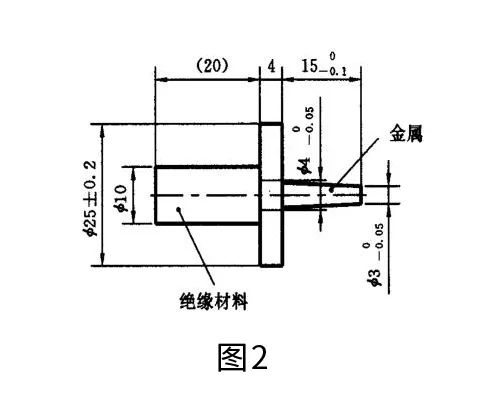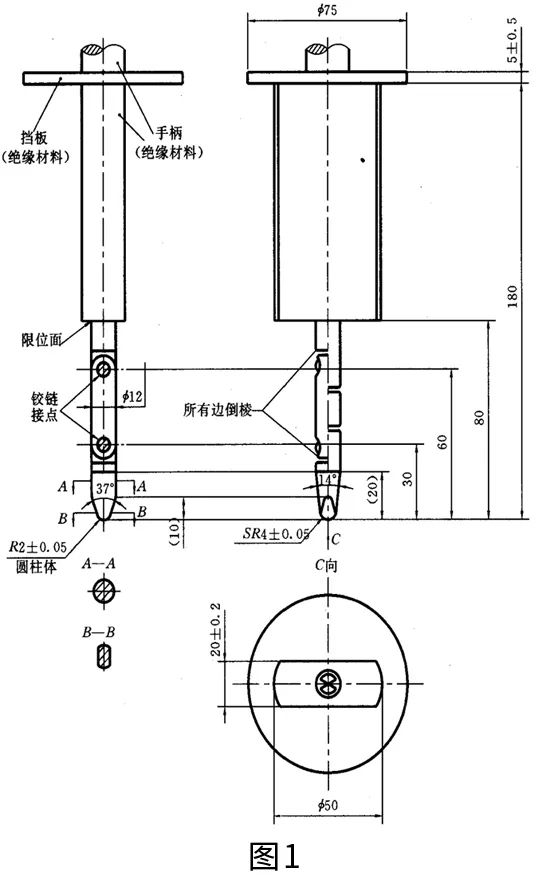1. In order to prevent the danger of accidental contact between people and live parts, the shell of the appliance shall not have holes leading to the live parts except for the holes necessary for operation and operation, and for II appliances, there shall be no holes for metal parts that lead to basic insulation and only basic insulation to separate the live parts.

3. The test refers to the hole that cannot be entered, and the test finger with the same size as the test finger straight without joints is applied with a force of 20N (with a push-pull force meter) for further testing, if the finger can enter, the test finger shown in Figure 1 is used to re-test and make the test finger pass through the hole; If the finger cannot enter, the applied force is increased to 30N. If the protective device is displaced or the hole is deformed as a result, so that the test finger shown in FIG. 1 can be inserted without force, then the test finger of FIG. 1 is used to test and the contact is displayed with an electric shock indicator. Test means that exposed live parts and live parts protected only by paint, enamel, plain paper, cotton fabric, oxide film, insulating beads or sealing filler shall not be touched. In addition, when testing the above holes with a test pin, the test pin must not touch the exposed driving electrical parts. For Class II appliances, the test shown in FIG. 1 means that metal parts separated only from live parts by basic insulation must not be touched.
4. Except for Class II appliances, for the live parts of the visible glow electric heating components that can cut off all electrodes with only one switching action and the supporting parts of these electric heating components, as long as the cover is not removed, it can be clearly seen from the outside of the appliance that these parts are in contact with the electric heating components, and the test probe shown in Figure 3 should be used for testing, and the test finger should not be used. Do not use excessive force during the test, and the test probe must not touch the live parts.
5. The standard test finger should be designed to use that each joint part can only be rotated 90 degrees in the same direction relative to the central axis of the test finger.
6. It is recommended to use a lamp to display the contact, and the voltage of the filament is not less than 40V.

Contact: Jason Lee
Phone: 13751010017
Tel: 0755-33168386
Email: sales@china-item.com
Add: 6F Baohe Building, Xixiang, Baoan District, Shenzhen, Guangdong, China